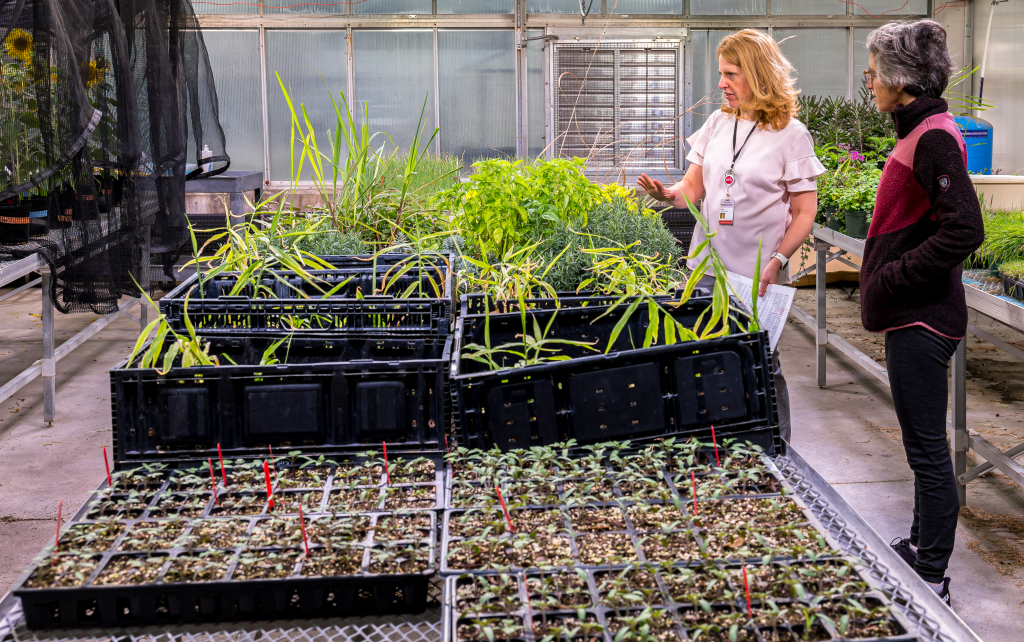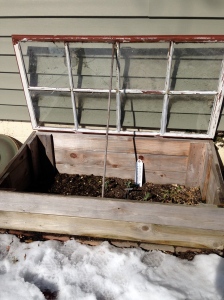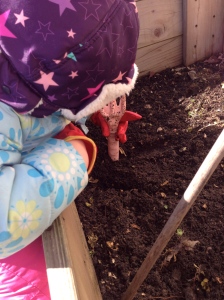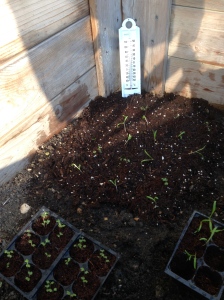This is the first of a series of posts I’ll be sharing this season highlighting growers in central Ohio. If I’m lucky, I’ll venture beyond the borders of the Buckeye state once or twice before the fall frost comes back around. I’m looking forward to taking the season off from our CSA in order to learn about what others are doing and contemplate new directions for our operation in the years to come. Hope you’ll join me on these adventures. – Jodi
This time of year, I spend a lot of time in the basement taking care of seedlings. It’s quiet, methodical work – sowing, watering, monitoring, thinning, transplanting – that seems perfectly suited for wintertime. But as soon as the sun starts shinning, and especially after the clocks spring forward and the temperature warms a little, I’m ready to get out.
As I’m taking it easy this year in observance of shmita, I have a few visits to other Columbus growing operations planned. Recently, I got to swing by the Howlett Greenhouses at OSU (along with longtime friend and photographer of the farm Julian Halliday) to check out how Amy Barr is getting ready for the season as garden coordinator for the James Cancer Center’s Garden of Hope.

2022 will be Amy’s 5th year with the garden, promoting the concept of food as medicine. From June-October cancer patients, survivors, and caregivers are invited to spend time in and harvest from the garden as often as once a week. While there, they learn about the nutritional benefits of a plant-based diet, which studies suggest may help prevent the growth and spread or cancer. In addition to increasing patients’ familiarity, knowledge, and access to healthy foods, the program promotes time outdoors and supports the psychological benefits of social engagement, breathing fresh air, and getting soil under your fingernails.
Amy works in concert with a dietician to teach participants how to add more produce to their plates. A healthy goal, she suggested, is to fill half the plate with vegetables and plant-based proteins. While they emphasize produce, they do not push a vegan or vegetarian diet. By visiting the garden, she reports, people are more likely to try new things. Staff and dietetics students from the university provide easy recipes to get people inspired by what they bring home.
In the same way the garden inspires participants, it has been inspired by them. Over the years, staff has expanded what they grow to meet the cultural demands of those they serve. After it was requested on patient surveys, Okra, was added to the garden offerings. Bonus: It has a beautiful flower. Patients have also taught Amy and her colleagues new ways to use familiar plants – like sweet potato leaves.

Like the rest of us, Amy and her team had to pivot their operations during the pandemic. Rather than a volunteer system, they ran the garden more like a tradition CSA – participants drove up to the garden and received a weekly share. While this was limiting in many regards, they learned that people were more likely to try new things when given them in a pre-made bag than when they were picking for themselves. This year they plan to try offering a “featured item” that everyone receives alongside those they gather for themselves.
If you or someone you know have or are living with a cancer diagnosis and are interested in learning more about The Garden of Hope, sign-up for their orientation April 30th, click here. You don’t have to be a patient at The James to participate and your caregiver (up to two, who need to register individually) can come along.
I can’t wait to visit the garden again this summer when it’s in full bloom. (Though it did look beautiful in it’s winter slumber….)






















